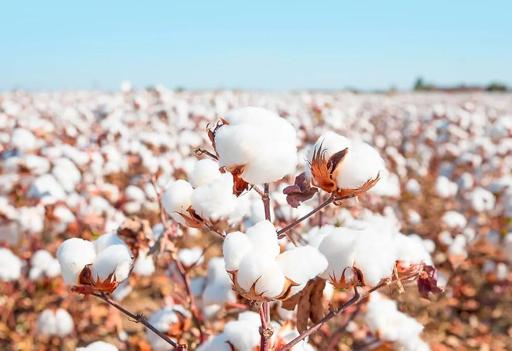Cotton
Gossypium spp.
Also known as: Cotton Plant

Growing Information
Growth Habit: Shrub
Climate Requirements: Prefers hot, sunny climates with temperatures between 21–30°C during the growing season.
Soil Requirements: Well-drained, loamy soils with a pH of 6.0–7.5.
Water Requirements: Requires moderate water, especially during flowering and boll development, but is drought-tolerant.
Planting Instructions: Sown directly in the soil, spaced 30–45 cm apart in rows, with planting depth of 2–4 cm.
Harvesting Information: Harvested once the cotton bolls have opened, typically 150–180 days after planting.
Characteristics & Benefits
Plant Characteristics: Cotton is a soft, fluffy staple fiber that grows around the seeds of the cotton plants. The fiber is used in the textile industry, and the seeds yield oil.
Nutrient Content: Cotton seeds are rich in oil, protein, and fiber.
Health Benefits: Cottonseed oil is used in cooking and for manufacturing products like soaps and cosmetics.
Yield Information: Average yield is 500–800 kg of cotton fiber per hectare.
Uses & Distribution
Culinary Uses: Cottonseed oil is used for cooking, and the seeds are used for oil extraction.
Industrial Uses: Cotton fiber is used extensively in the textile industry, and cottonseed oil is used in cooking and industrial products.
Native Range: Native to tropical and subtropical regions of the world.
Current Distribution: Grown worldwide, with major producers including China, India, and the United States.
Pest & Disease Management
Common Pests: Cotton bollworm, aphids, and whiteflies.
Diseases: Verticillium wilt, Fusarium wilt, and bacterial blight.
IPM Practices: Use of resistant varieties, crop rotation, and biological control methods for pests.
Market Value: $200.00
Research & References
Studies and Articles: Research on improving cotton yields and resistance to pests and diseases.
Bibliography: Cotton Cultivation and Uses, 2023.
Comments
Add CommentNo comments yet. Be the first to comment!